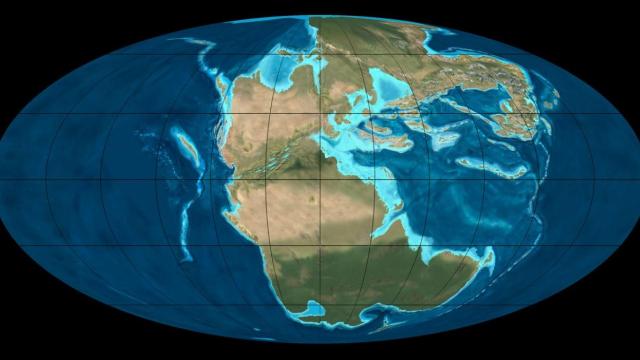
Recently I was thinking about Earth’s continents, when I stumbled upon the question, how did the continents form and what continents existed before them? I did some research, and found many details about how the continents were together and wanted to share the information with others.
The first continent was a small chunk of land called Vaalbara. This continent was made up of some pieces of present day Australia and Africa and was very small. Any people visiting Earth would see only a dot of brown against the churning blue ocean. Scientists still don’t know for sure if Vaalbara was an actual continent, so this may all be fake. The oldest continent would have been Ur, still smaller than any continent we have today, but a continent nevertheless, since it inhabited Earth alone for millions of years.
The next continents to form would be larger than Ur and Vaalbara, and would be closer to the size of modern day continents. The first in this sequence was Kenorland, a continent larger than its predecessors that was formed approximately 2.7 billion years ago. It was made of most of the modern U.S.A and Canada, Greenland, the Scandinavian countries, Western Australia, and what is now the Kalahari desert. It was the dominant landmass on Earth for about 100 million years, until it broke up 2.6 billion years ago, causing a sudden increase in rainfall. This decreased greenhouse gases, and since the sun was only 85% of its current warmth, brought on the first Snowball Earth, where the Earth was frigid for millions of years.
The next supercontinent, Columbia, was even bigger than the others, with 50 million square kilometers in land mass. Columbia was made 1.8 billion years ago, and still wasn’t known for sure. After Columbia came Rodina, the first supercontinent people are absolutely sure existed. Rodina formed around 1 billion years ago from the remains of Columbia. What Rodina looked like isn’t known, but it was based south of the equator, and began breaking apart 550 million years ago.
This breakup caused many things to happen, some good, some bad. LIke the time when Kenorland broke up, Rodina’s break up caused a Snowball Earth. It also caused more seas and shallower water, a necessity for life on Earth to emerge to the surface, as life was only in the ocean back then. This breakup caused mass explosions from volcanoes, which shot nutrients up into the oceans and made life easier for the organisms during the cold age.
Then there might have been a continent named Pannotia, which didn’t last very long and broke apart about 60 million years after its formation. This is also a supercontinent that some believe existed and some say the opposite. If it existed, it was formed by glancing collisions with tectonic plates. Then was the formation of the supercontinent that existed closest to our era of living, Pangea. Pangea then split into smaller and smaller chunks of continents, that then formed our 7 present day continents.
Within the next 250 million years, there is a large likelihood that the continents will merge into a new supercontinent, which will probably be named Amasia, Novopangea, or Pangea Ultima. One of these scenarios that scientists consider realistic is that Africa and North America will collide, making the Atlantic gone most likely. South America will collide with Antarctica, while Asia, Africa, and Australia, will be together. Europe will get cold as the landmass heads toward the north pole.
I learned so much and worked so hard to unveil the secrets of how the continents moved, and I hoped you learned just as much as me. Earth has never seemed so fascinating, and here is the link to a video I found. It shows what may have happened with the plates moving, and what piece of land ended up where. https://www.youtube.com/watch?v=UwWWuttntio
Comments
Post a Comment